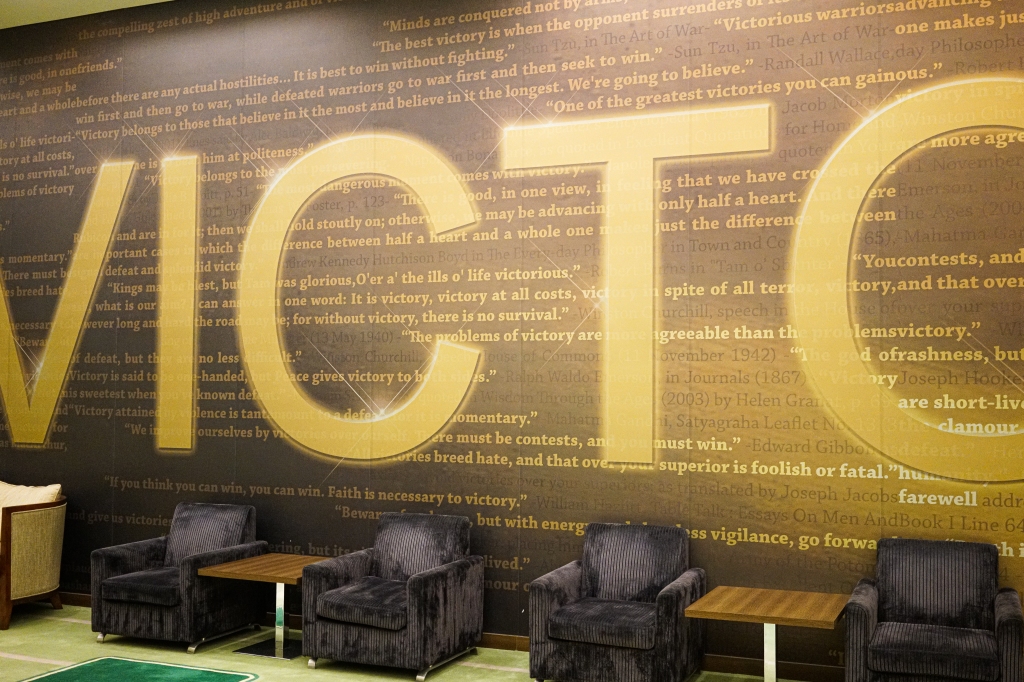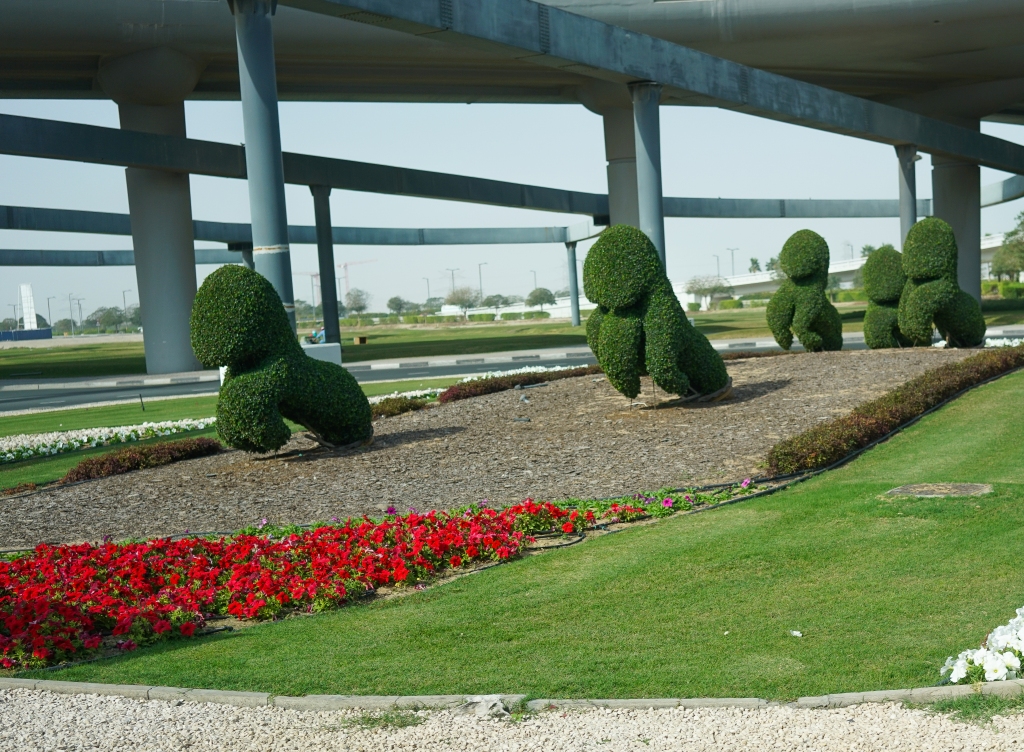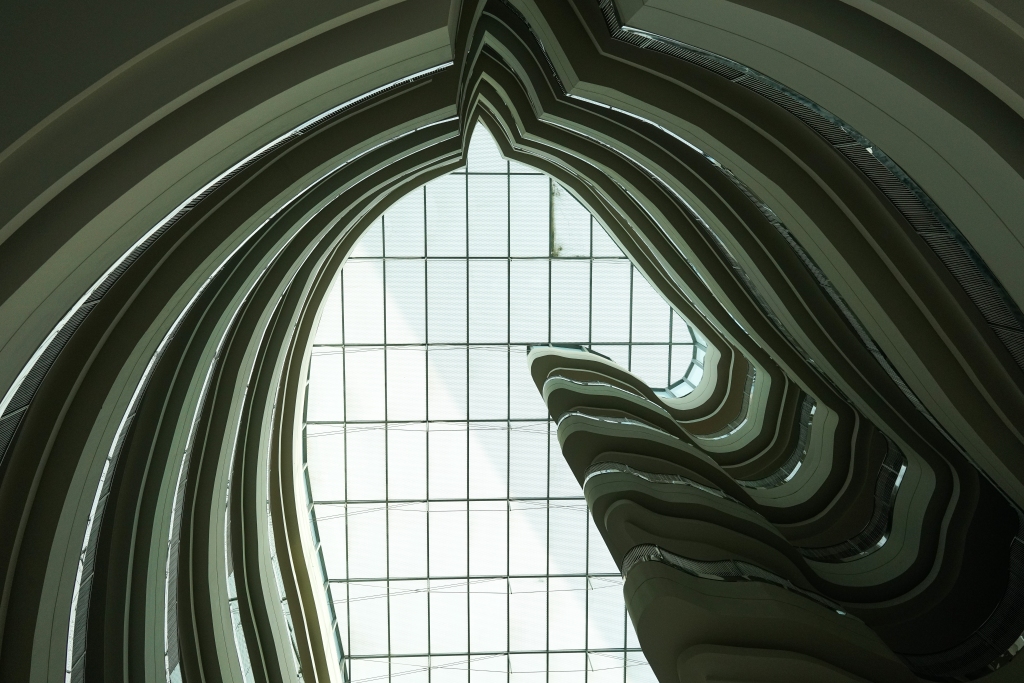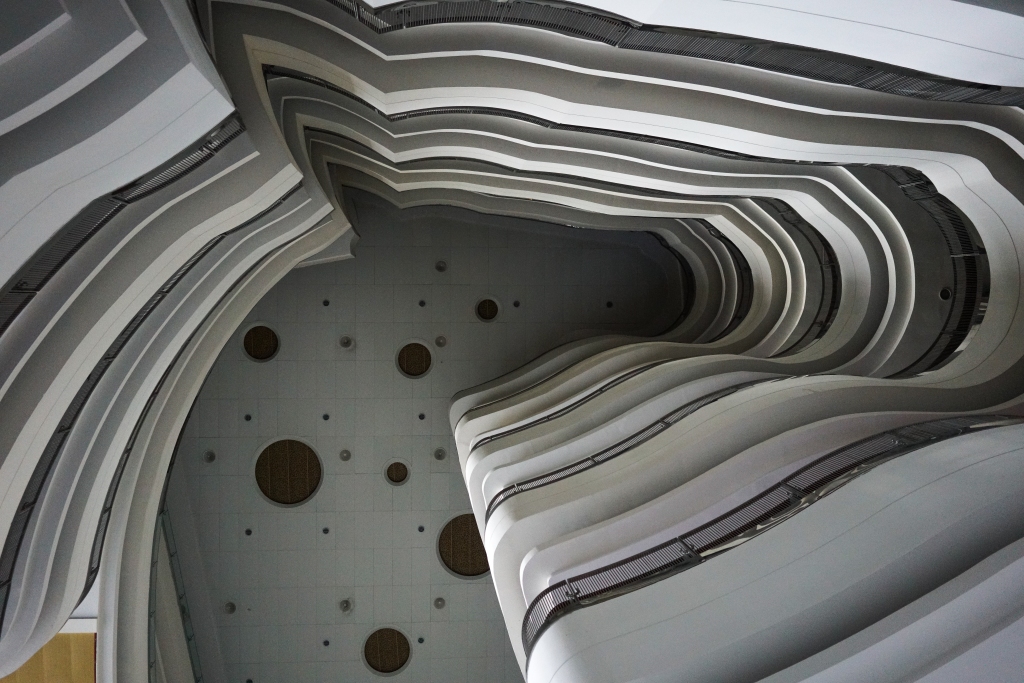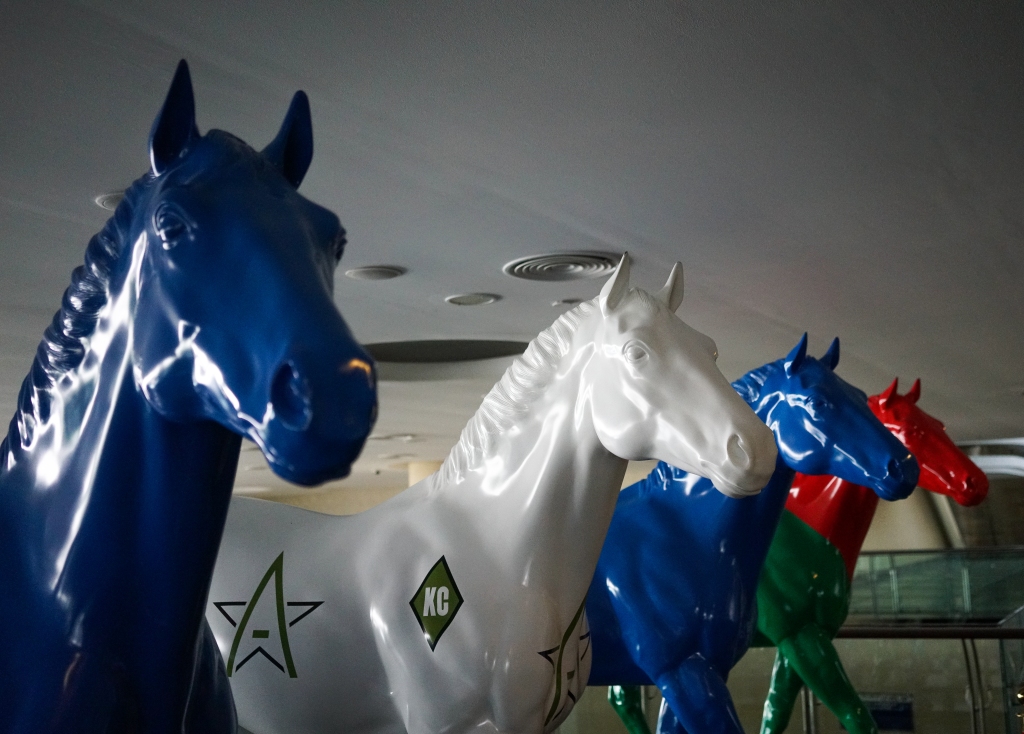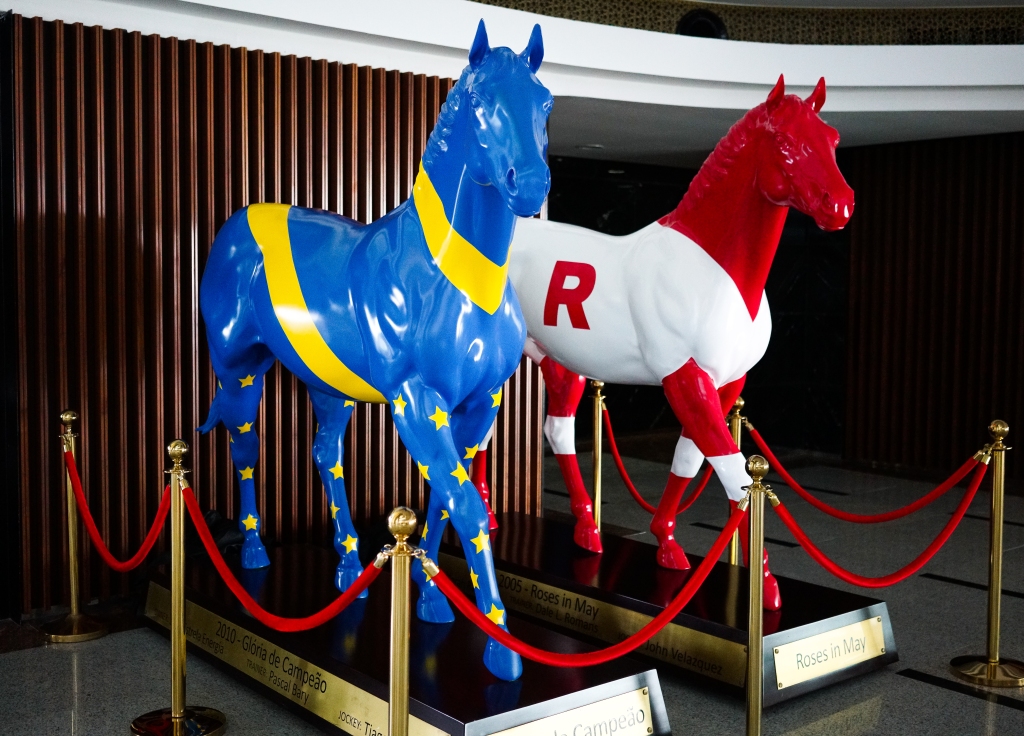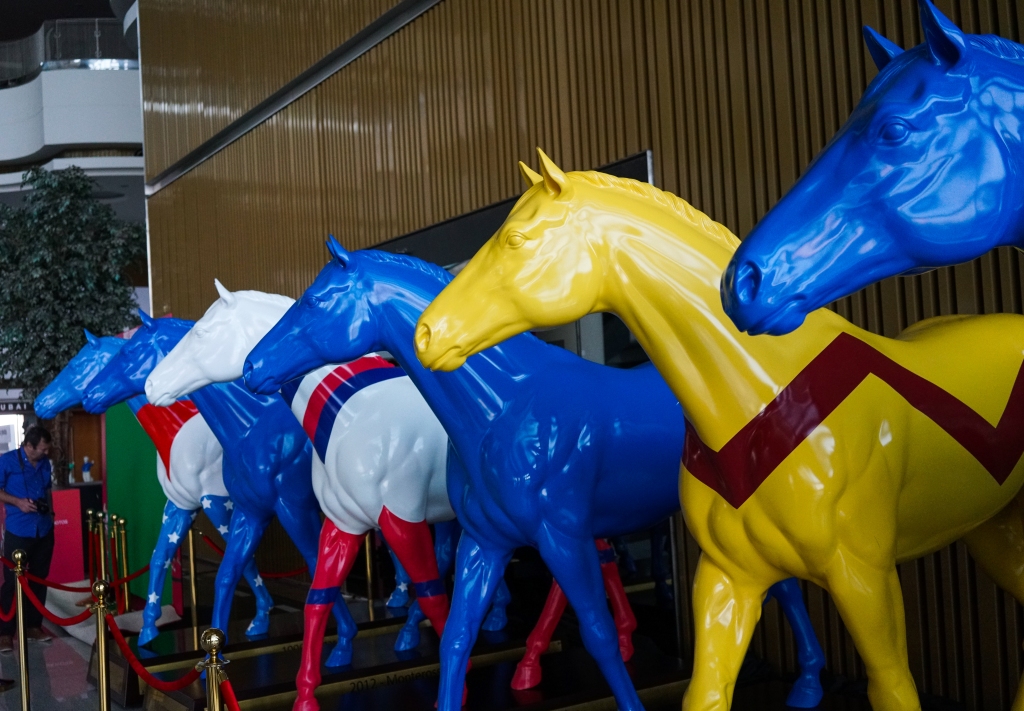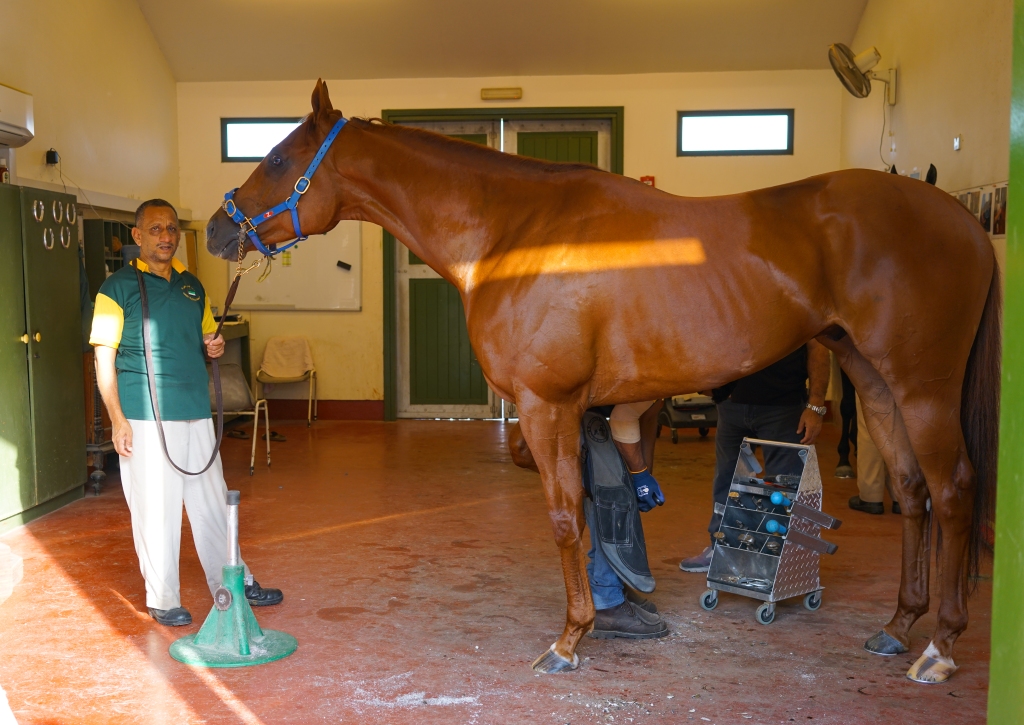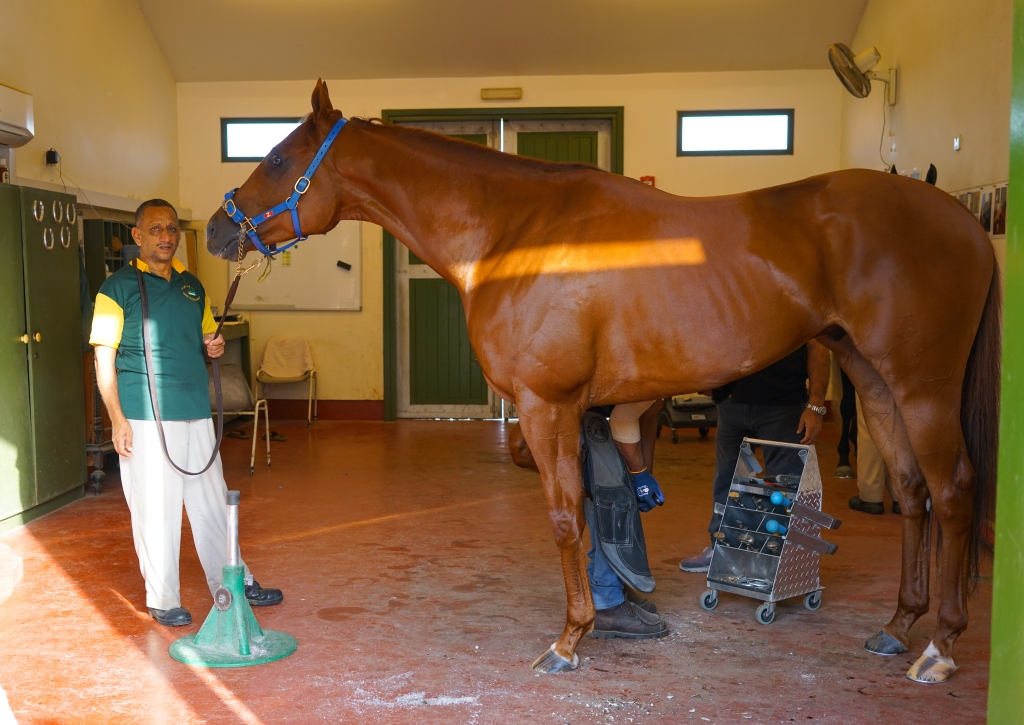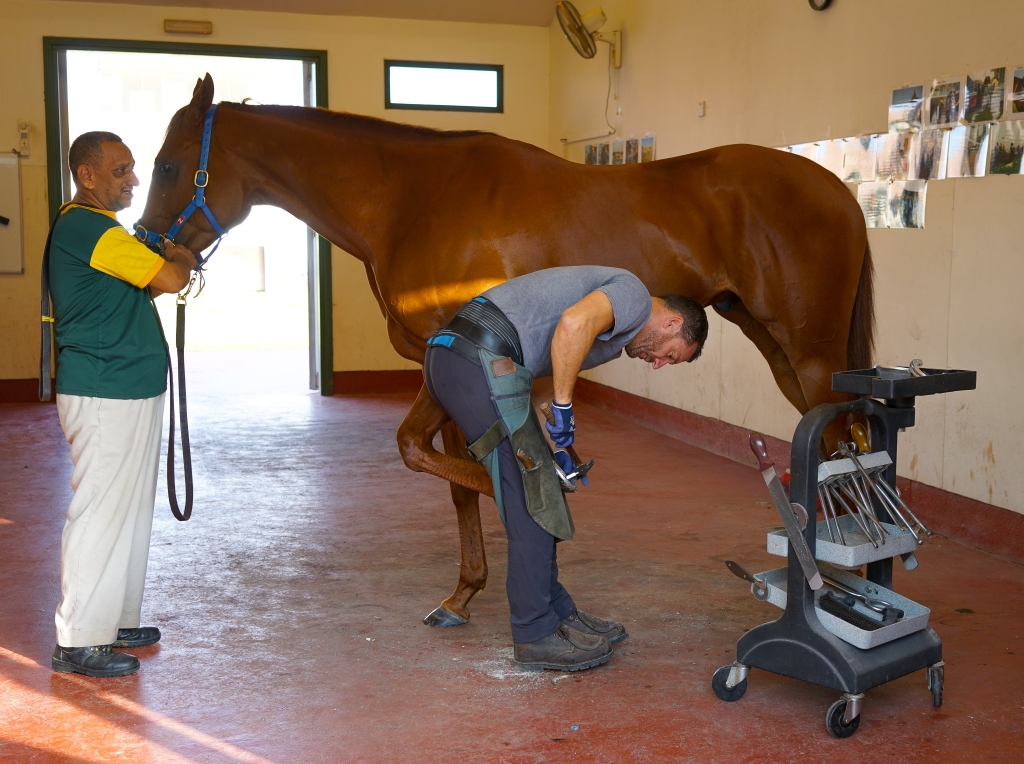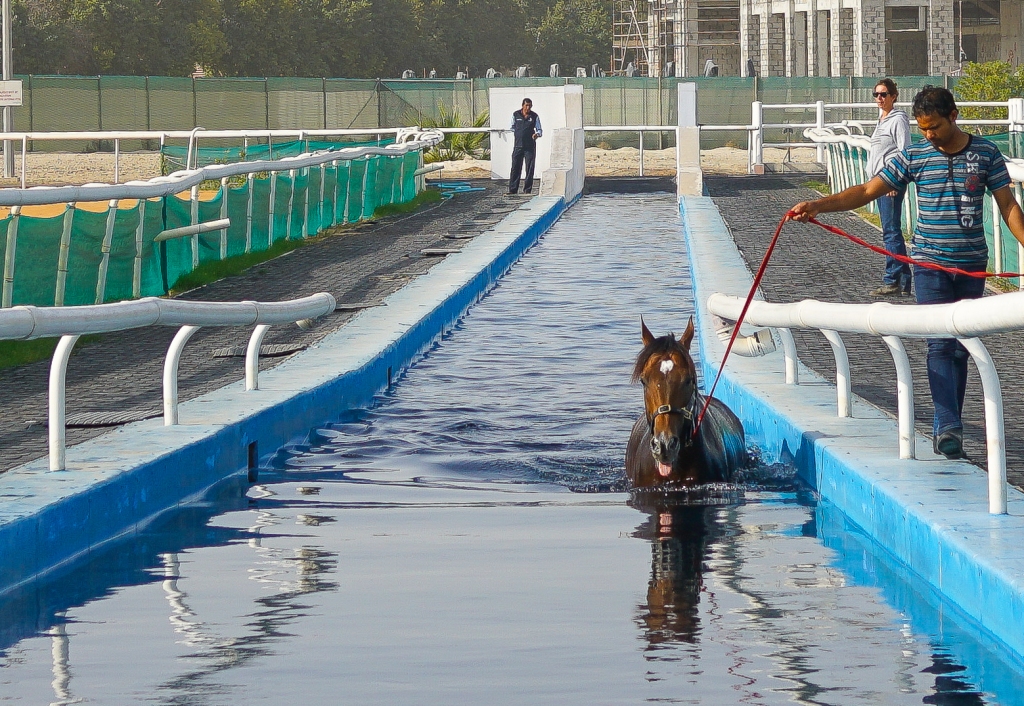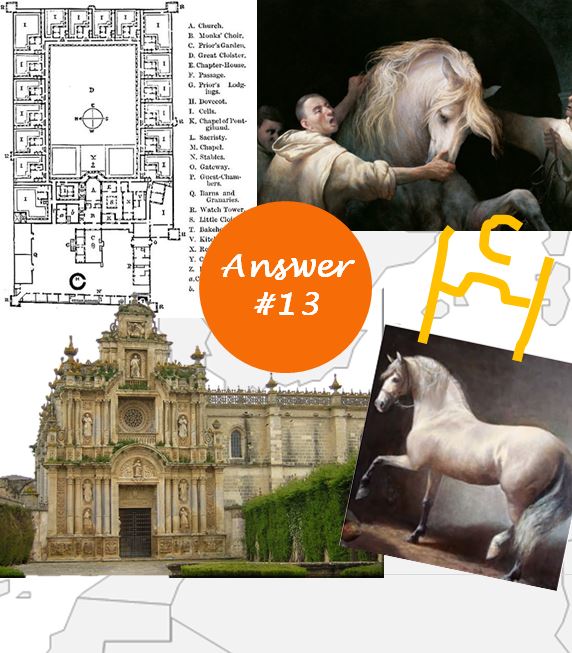During my last business trip to Dubai, I treated myself to the Breakfast with Champions. The “breakfast” was a half-day-long tour of the Meydan hippodrome, stables, and other facilities, which started with breakfast in the fancy all-equestrian-themed 5-star Meydan hotel.
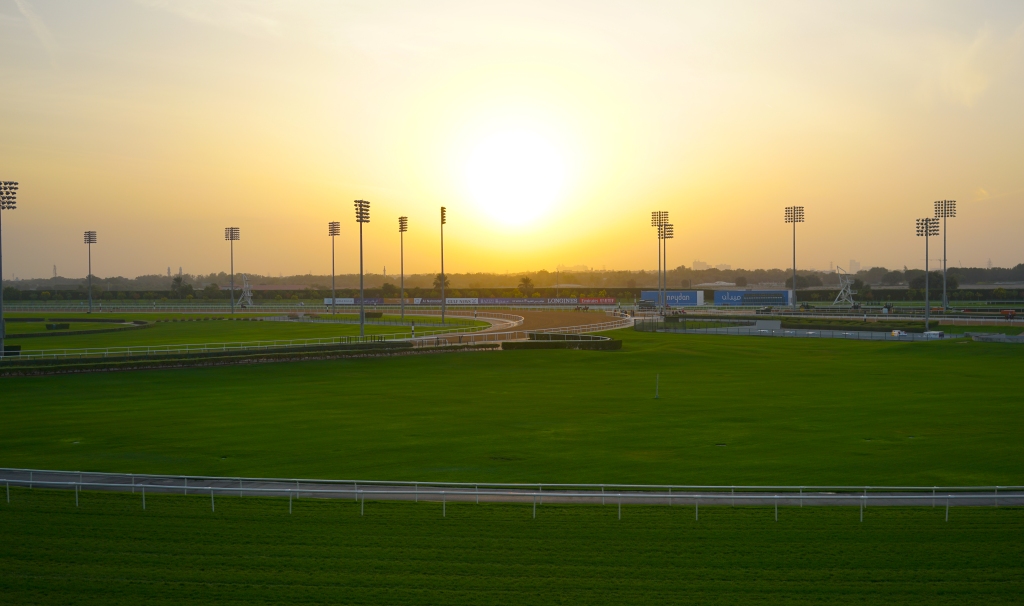
Usually, the tour runs on Tuesdays and Wednesdays from September to March.
After a lavish buffet breakfast at Farriers restaurant, we got onto the tour bus and took a short ride around the racecourse.
The current racecourse was built 16 years ago in Nad al Sheba. From then until 2020, not a single season of the Dubai World Cup was skipped as this massive construction was completed within one year.
Here are a few more interesting facts about the Meydan construction. I bet you didn’t know them before:
1) Despite being only the 20th biggest hippodrome in the world, it has the longest grandstand, exceeding 1.6 km.
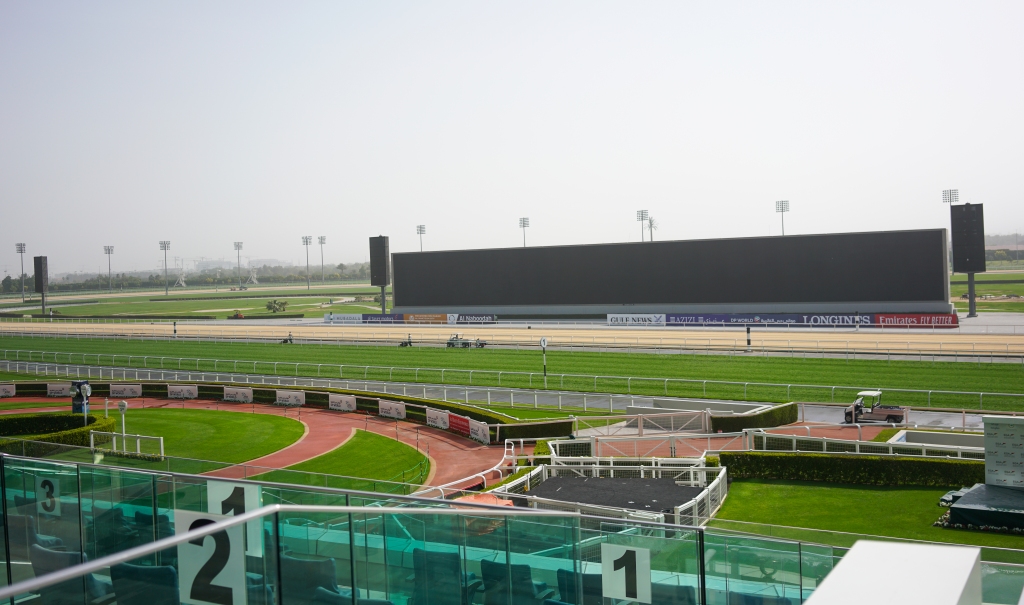
2) It was featured in Mission: Impossible IV, the movie.
3) If you view it on Google Earth, you’ll see that, from above, the building and nearby area look like a giant hawk spreading its wings.

4) There are 2 racing rounds: a 1-mile dirt one and a 2-mile grass-covered one.
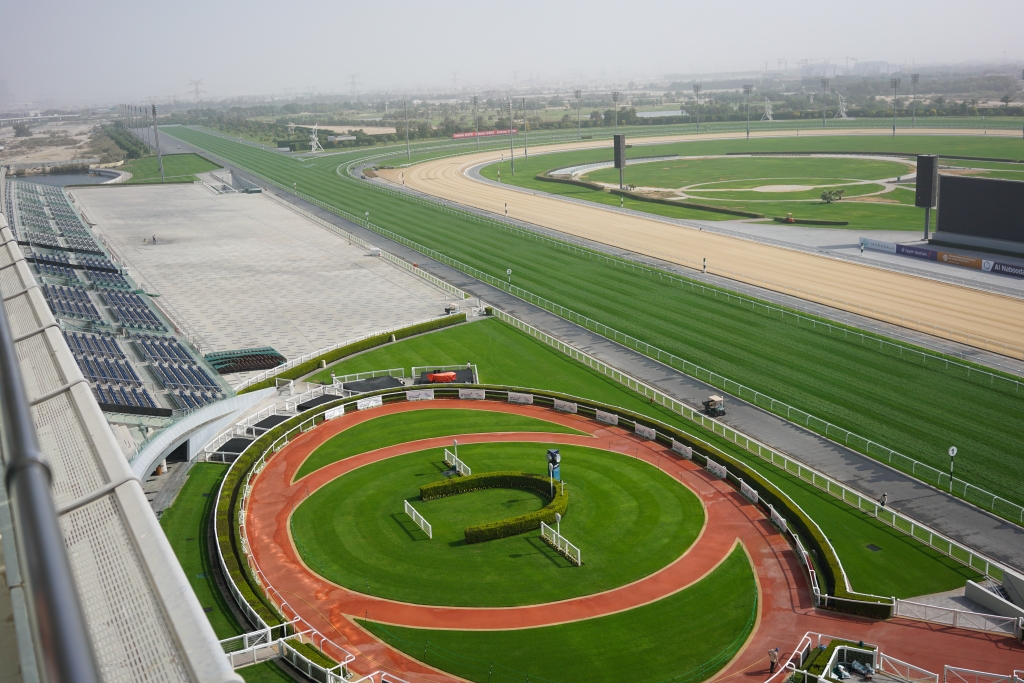
5) If you are a foodie, you can enjoy watching regular races while having a meal in one of the 6 restaurants. By the way, the tour ticket serves as a 15–20% discount voucher in all the restaurants and the gift shop.
6) The venue can hold up to 84,000 guests.
7) Everything in the Meydan hotel is horse-themed, even the ceiling.
The Course and the Cup
Until 2017, the Dubai World Cup (with a prize of 10M USD) was the richest race in the world.
All Dubai Cup winners get their plastic statue painted then placed in the racecourse hall later.
The Emirates’ equestrian quarantine is also located near the racecourse.
The Horses
Usually, horses arrive from all over the world in December. If they race well during the season, they stay until the main race in March/April. Sadly, this year, the main race had to be cancelled due to the COVID-19-related nationwide quarantine.

One of the most famous horses that competed on that racecourse was Dubai Millennium, who won a number of major races between 1998 and 2000, became the best racehorse in the world in 2000, earned his owner about 4.5M USD of prize money, and sired a few very successful colts. He achieved all of this during his very short (5-year) life. Today, his grandsons and granddaughters occupy the Sheikh Mohammed bin Rashid al Maktoum stables.
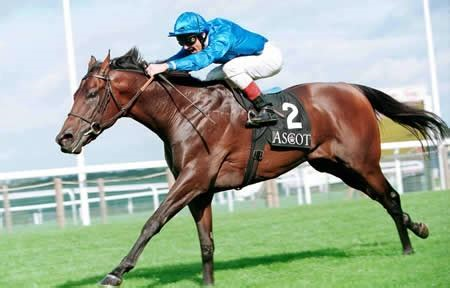

The competitive life of racehorses is extremely short. So, when they become too old to race, they have a few choices depending on their personalities. Some become pace horses and stay at the Meydan stables. Others get sold and can continue their careers in different kinds of sports or as school horses. If none of the above works out, the horses are moved to the remote stables of the Sheikh, where they enjoy happy retirement.
The Stables and Other Facilities
During racing season, over 500 horses are stabled in Meydan.
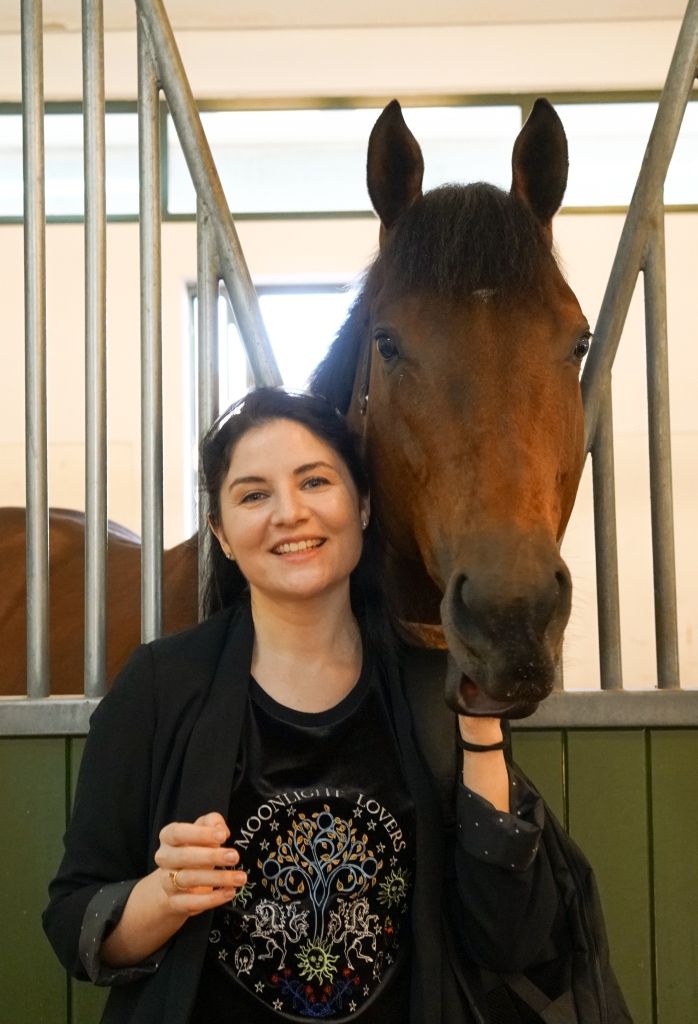
Everything at the racecourse has been doubled to keep local and foreign horses as far away from each other as possible: there are two different racecourses, two clusters of stables, and even two swimming pools to keep local and foreign horses apart.
The animals live in great conditions. Some of them are literally spoiled. For example, one rejected carrots.
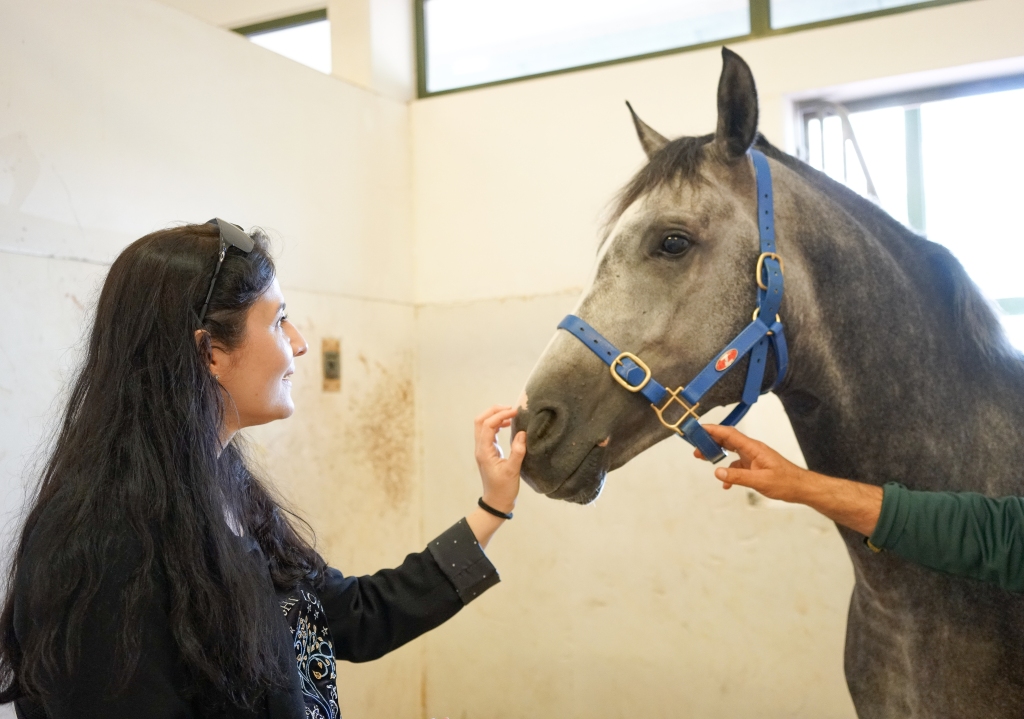
Every local groom takes care of 2–4 horses. International grooms have an even easier job as they rarely look after more than 2 horses.
We were told to watch out for white crosses on the doors – they indicated not so friendly horses that we should refrain from touching. The others were pretty happy to pose with the guests, especially for a treat.
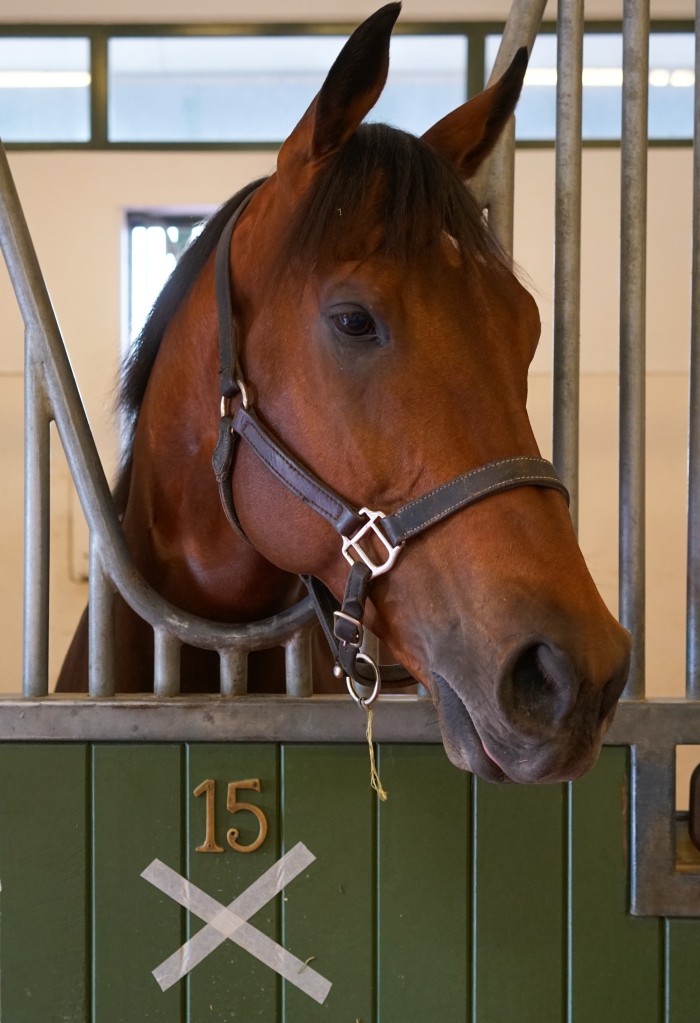
The Feeding Rooms:
We were not allowed to take pictures in the feeding rooms (apparently there were some secret components stored there). What impressed me the most were the massive supplies of date syrup on the shelves. When added to water, it makes horses drink more, which is especially important during the summer months. Otherwise maintaining the right water balance is challenging.
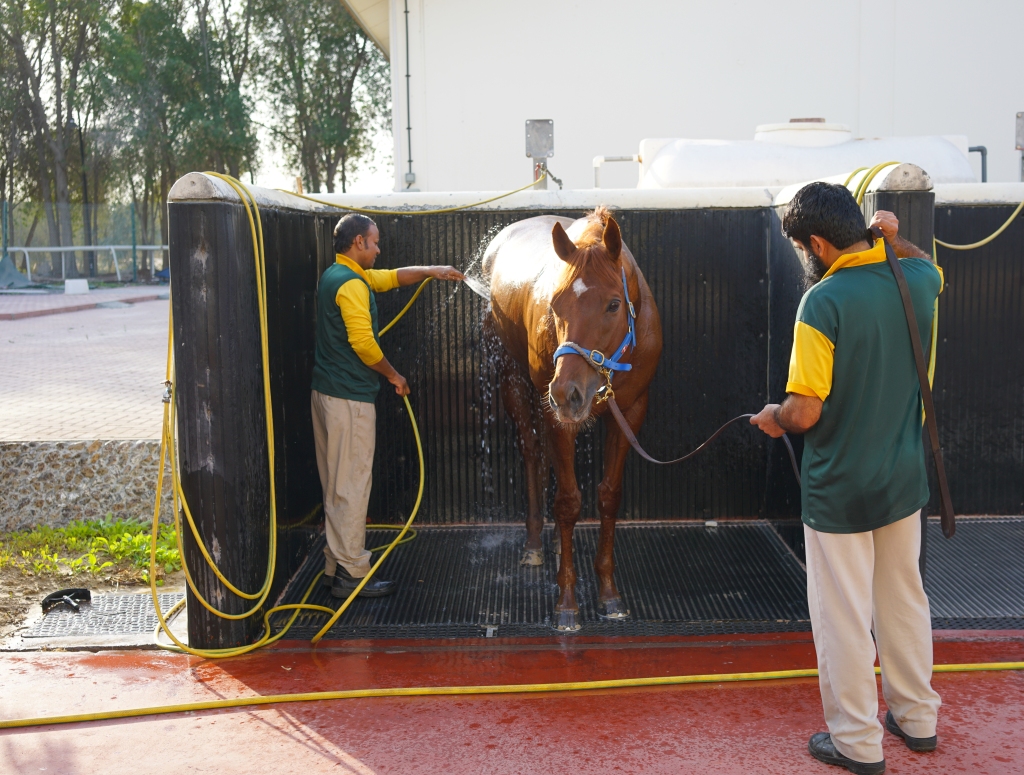
Another surprise: about 90% of the hay fed to the horses is imported from the USA; only 10% is produced locally.
The Treadmill:
It was my first time to see an equestrian treadmill. It had four speeds (walk, trot, canter, and gallop) and could incline and decline for up to 7 degrees. It is rarely used for exercising as its main purpose is to help jockeys and trainers detect any movement abnormalities.
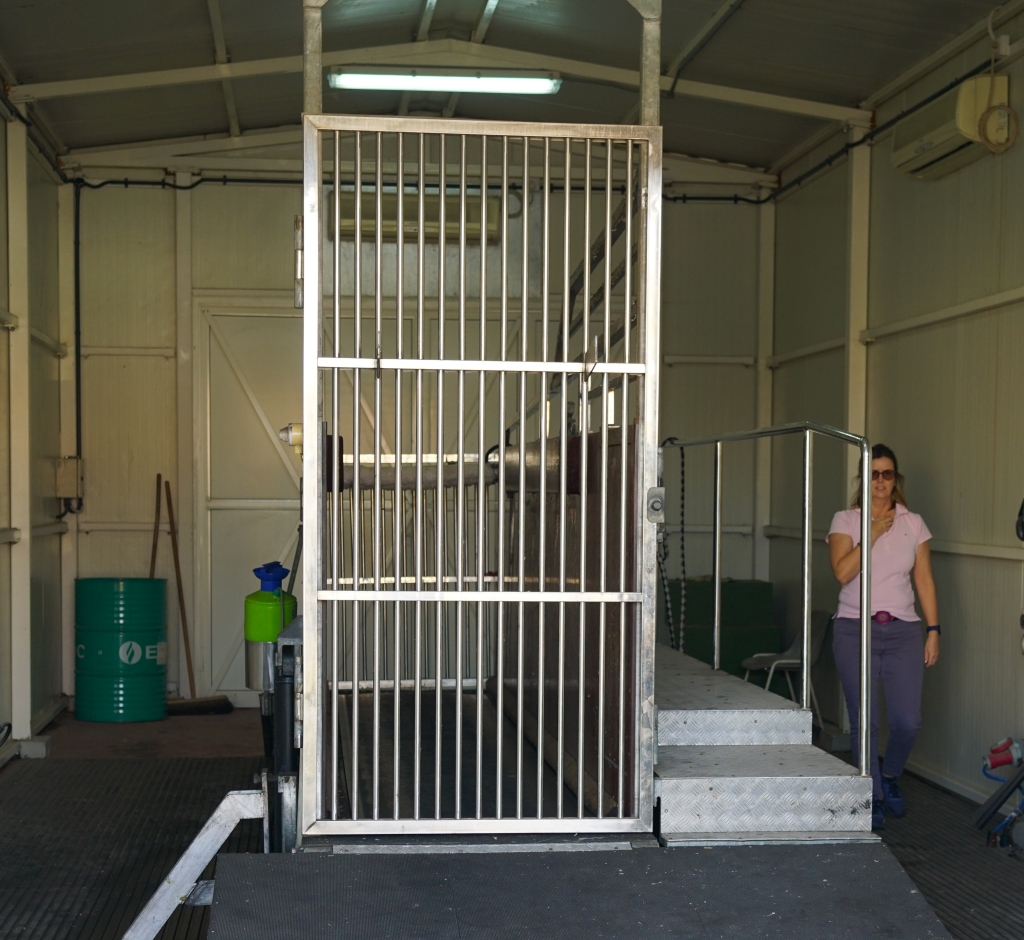
The Scale:
This weirdly shaped device is used to capture horse weight. I asked if trainers analyzed the correlation of the weight to the performance and adjusted the diet or exercise routines accordingly. The answer was “Not really. Trainers usually rely on their experience and intuition.” I have a feeling that, in the current data-driven world, an Equestrian Moneyball story is just waiting to happen. Wouldn’t it be good to become a data analyst specializing in races, the Olympics, or breeding?

The Farrier Room:
The shoeing process here looks very lean and surgical.
Outside the farrier room, there was a bag of used shoes, which we were offered as souvenirs. Twisting a sparkling shoe in my hand, I thought that horses were the only creatures in the world humans hammered nails into.
Some guests used it as a great opportunity to bring gifts to all their friends and family and half emptied the bag. I guess that, later, X-ray operators at DXB airport had some fun checking their luggage.
The Tack Room:
I was amazed to learn that the same saddle could be used for many horses. On second thoughts, though, it’s pretty logical. Racing saddles are soft, they don’t have trees, and, as a result, they don’t need the precise fitting that saddles in other disciplines do. Besides, jockeys don’t really sit in the saddle.

Another revelation – in Meydan, they prefer plastic bridles to leather ones. The reason is that plastic ones are easier to maintain and cheaper.

During the races, competing teams are easy to identify by the colors of their silks and hats. During practice, the color of the saddle cloth serves the same purpose.
The Swimming Pools:
There are two 75-meter-long swimming pools for horses. I naively thought that, as part of their training, horses should swim for 1–2 km per training session, much like human athletes. But the horses we saw during the tour did only 2 rounds – 150 meters.
The Jockeys:
In Meydan, jockeys have exceptional facilities, spacious changing rooms, steam-rooms, and saunas.
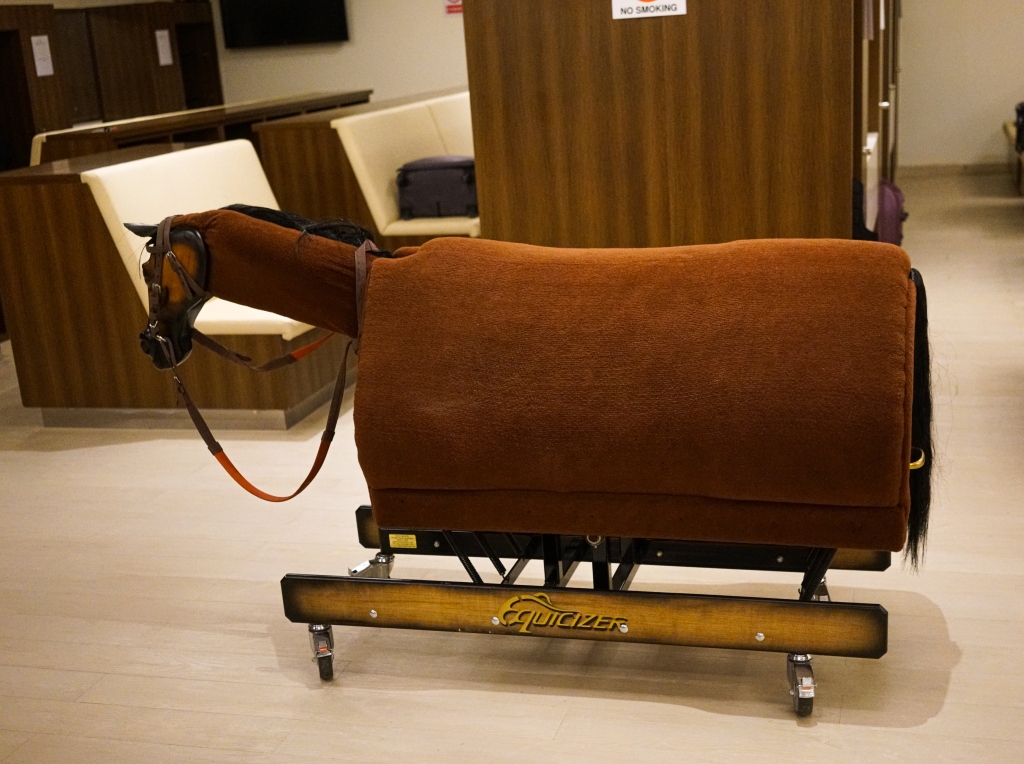
Female jockeys didn’t compete in the Dubai World Cup until 2012, when the Canadian jockey, Chantal Sutherland, made history (in her own words). Nowadays, the layout of the weighing and preparation rooms has been changed to accommodate both groups of riders.

Before the tour, I was under the impression that jockeys should be extremely light, a maximum of 50 kg. Apparently, the average weight of a jockey is 8.5–9 stones (54–57 kg).
Right before the race, all the jockeys meet in the Victory Room. I guess there is no better place and time to read the inspirational quotes by famous equestrians covering that huge wall.
